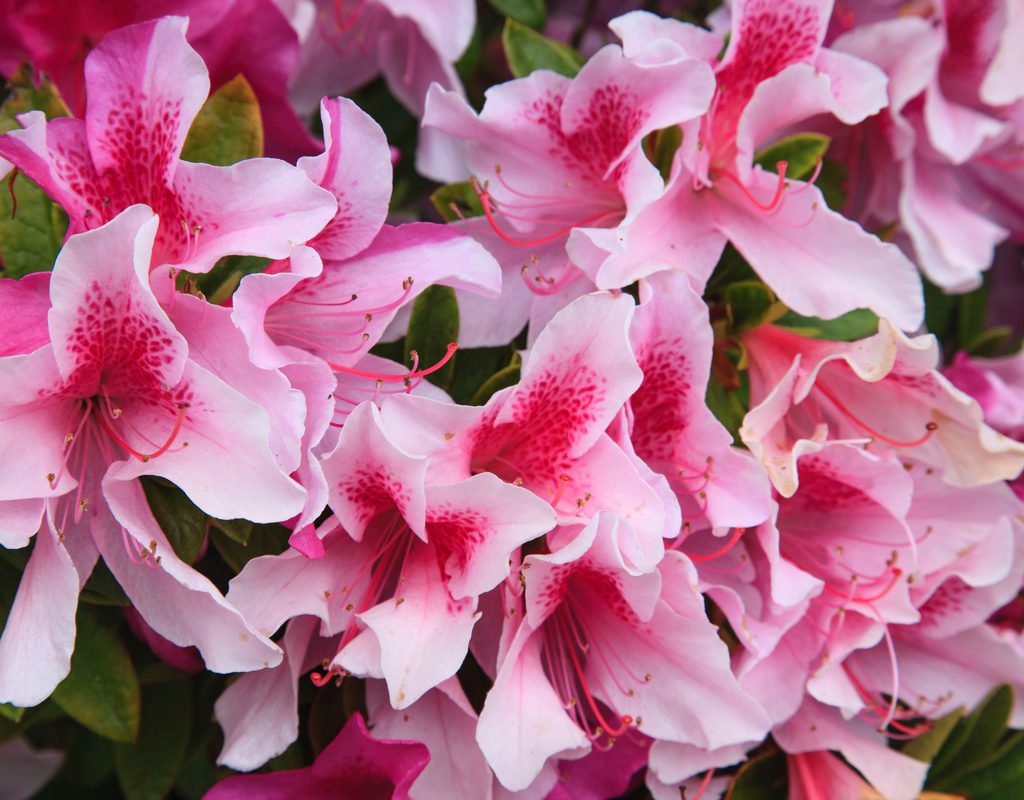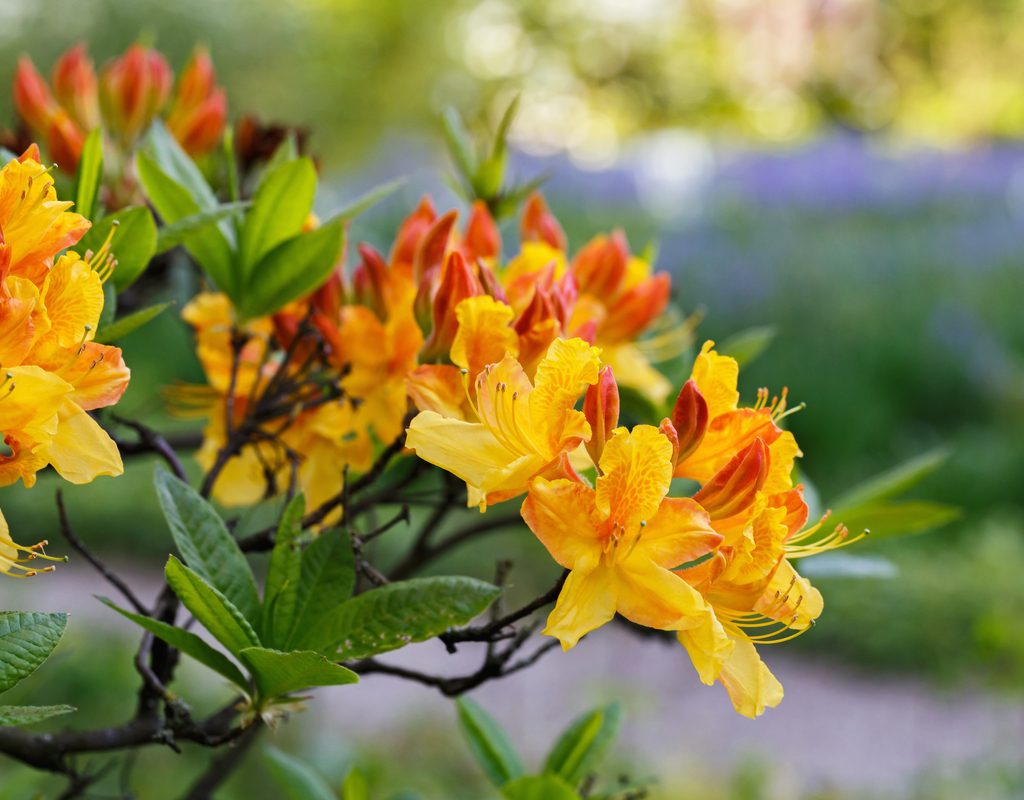If you’re looking for a beautiful and easy to care for shrub or bush, look no further than azaleas. They have lovely flowers, aren’t difficult to grow, and are a good size for most gardens. However, if you’ve never grown a bush before, then you might be a little anxious about how to plant and care for one. Do you grow them from a seed or start with a seedling? How much should you fertilize them? Do azaleas need a lot of sun and water, and what is their preferred climate? If you’re wondering about all these questions, then don’t worry! We have the answers, here in this simple guide to growing and caring for azaleas.
Deciduous varieties of azalea
Electric Lights Double Pink is a variety developed by the University of Minnesota. It features a strong, slightly spicy scent and is deciduous, meaning its leaves turn beautiful colors during autumn. In early spring, it produces flowers in a stunning shade of pink. Additionally, this variety has increased cold hardiness and is great for zones 4 through 7.
If you’re looking for a variety to really brighten up your shady areas, consider Fireball. True to its name, this variety has gorgeous red and orange flowers starting in mid to late spring. Despite their fiery look, these flowers have a remarkably sweet scent. Adding to its flaming appearance, this variety is deciduous, with dark leaves that slowly turn dark reddish-purple during fall. This variety is slightly smaller, growing to between 4 and 6 feet tall.

Evergreen varieties of azalea
Bollywood is a great choice if you’re looking for a low border plant, as they stay quite short. It also has variegated leaves, with a dark green center and silverish-white edges. If you’re worried about losing these leaves in the fall, then don’t worry! Bollywood is an evergreen variety. Its flowers are a dark, rich shade of pink with a subtle sweet scent, and they begin to show up in late spring and early summer.
George L. Taber is a stunning azalea variety. It’s a tall evergreen variety, growing to between 6 and 8 feet tall and 5 to 6 feet wide. They make beautiful dividers if you’re looking for a way to separate two sections of a garden or yard. The real highlight of this variety, though, are its flowers. Blooming in early spring and again at the beginning of fall, George L. Taber azaleas are pale pink with a small scattering of dark pink spots and have a light, subtle scent.

Planting azaleas
When should you plant azaleas?
Azaleas can be planted in either late spring or early fall. As with most shrubs, azaleas are typically transplanted into gardens as saplings or seedlings, which are available at most nurseries. However, you can start your azaleas from seed if you want to. Seeds should be planted in late spring, but will see more success if you start them indoors and transplant them when they’re a little older.
Where is the best place to plant azaleas?
Your planting location should have well-draining soil that’s slightly acidic and rich in organic matter. Azaleas are quite picky about the type of soil they will grow in, so it’s a good idea to test the soil before you begin planting. If your soil is low in nutrients, consider adding compost to it. Pine needles and coffee grounds are both good ways to make your soil more acidic, while sand or gravel can improve poor drainage.
When it comes to sun, azaleas tend to do best in either filtered sun or partial sun. They can burn in full sun, especially in hotter climates. However, deciduous azaleas will produce more flowers when exposed to more light, so it’s a tricky balance to maintain. Try to find an area with something tall overhead, like a tree or the overhang of a roof, which will provide some shade while still allowing the azaleas to absorb light.

Caring for azaleas
Azaleas tend to have shallow root systems. This means they’re more sensitive to drought and nutrient deficiencies than other plants, since their roots cannot reach as far into the soil, where water or nutrient reserves may be. Keep a careful eye on your azaleas, and water them when the soil dries out below the top inch of soil. If you notice stunted growth or discolored leaves, they may be lacking in nutrients. To best remedy the situation, test your soil to see what specifically is missing.
You can prune your azaleas to control their size, improve their overall health, and increase the amount of flowers they put out. Use a pair of sharp, clean garden shears. It’s best to prune them during late spring or early summer, when the flowers are fading and withering. Pruning later in the year should be limited to damaged or diseased branches, otherwise you’ll be pruning away the new flower buds.
Whether you choose to plant one of the varieties we’ve listed here or explore others (such as the white-flowered Cascade or the yellow Lemon Light), you’ll be sure to see success with the tips we’ve outlined here. It might take a bit of trial and error to get the lighting just right, but don’t worry. For as picky as azaleas can be, they’re also fairly resilient, and can be quite forgiving as you learn.


